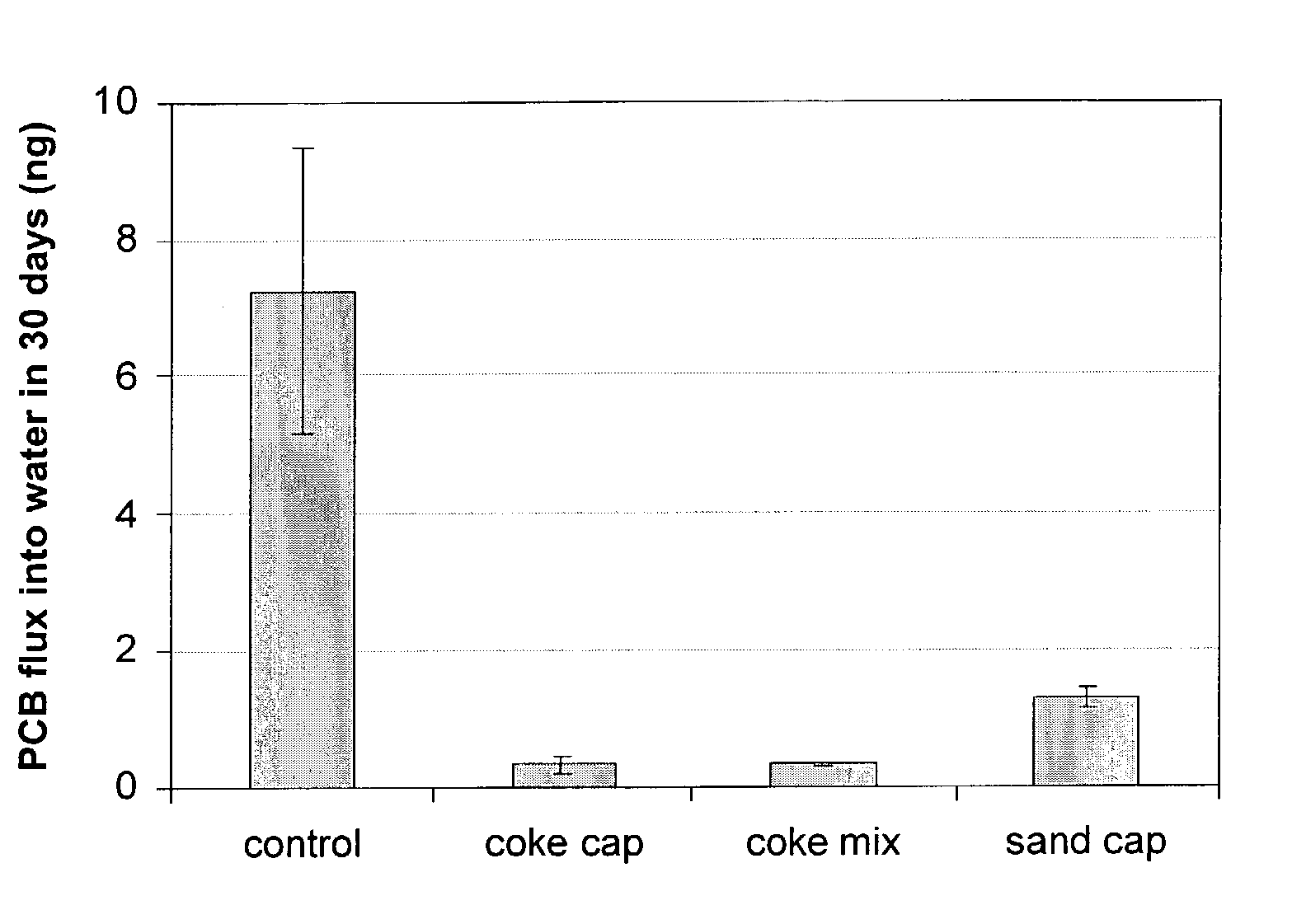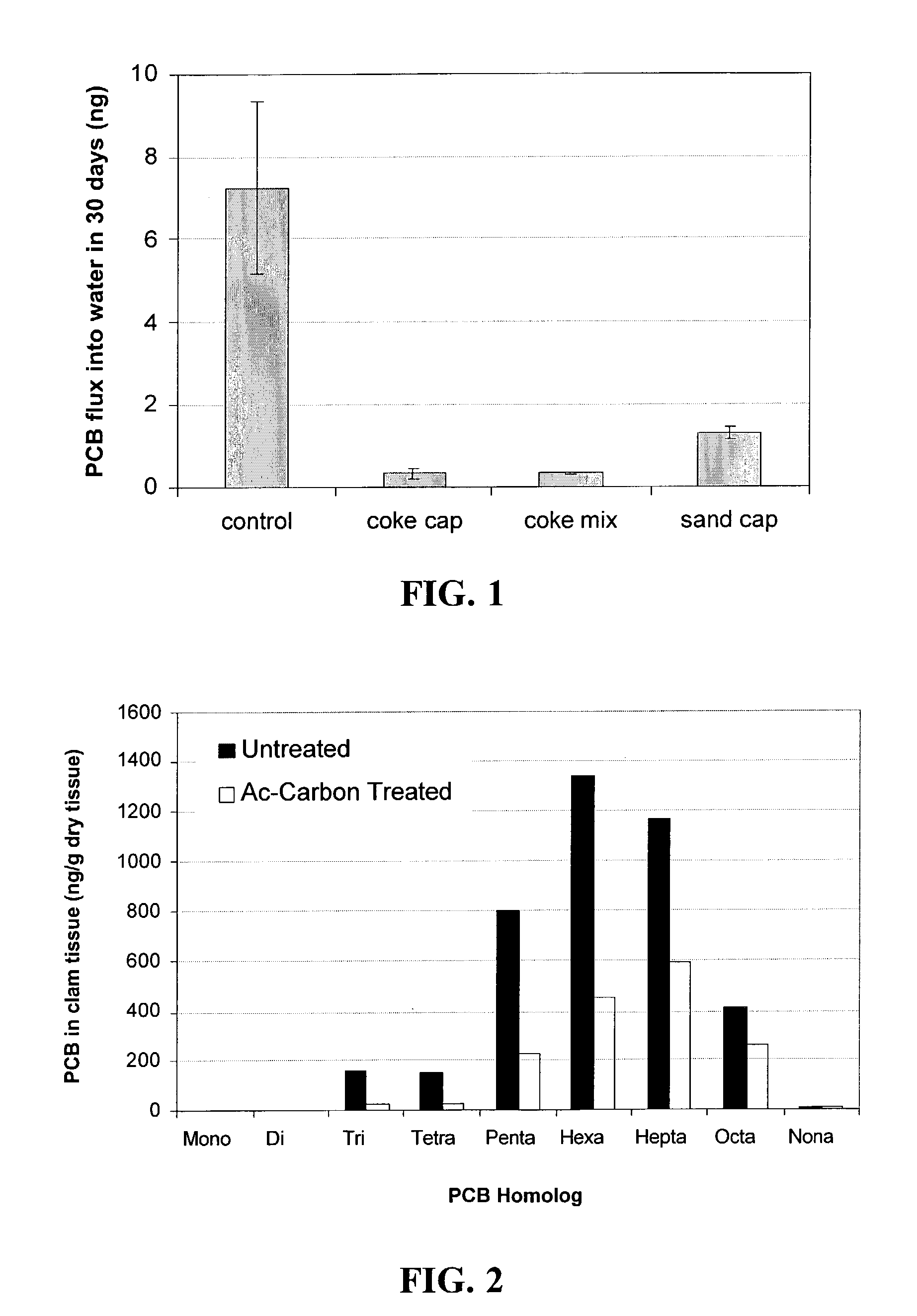In situ stabilization of persistent hydrophobic organic contaminants in sediments using coal- and wood-derived carbon sorbents
- Summary
- Abstract
- Description
- Claims
- Application Information
AI Technical Summary
Benefits of technology
Problems solved by technology
Method used
Image
Examples
Embodiment Construction
[0015]Although the following detailed description contains many specifics for the purposes of illustration, anyone of ordinary skill in the art will appreciate that many variations and alterations to the following details are within the scope of the invention. Accordingly, the following embodiments of the invention are set forth without any loss of generality to, and without imposing limitations upon, the claimed invention.
[0016]We recently discovered that PCBs and PAHs are very strongly bound to black carbon particles (e.g., charcoal, coal, coke, and char) in freshwater and marine sediments. Such PCBs and PAHs bound to black carbon particles do not appear to be easily leachable. Biological tests show that PAHs associated with black carbon in sediments are not available to microorganisms for biodegradation and also not available to earthworms for biological uptake. This means that black carbon particles in a wide variety of sediments can act as strong sorbents, which, naturally over...
PUM
 Login to View More
Login to View More Abstract
Description
Claims
Application Information
 Login to View More
Login to View More - R&D
- Intellectual Property
- Life Sciences
- Materials
- Tech Scout
- Unparalleled Data Quality
- Higher Quality Content
- 60% Fewer Hallucinations
Browse by: Latest US Patents, China's latest patents, Technical Efficacy Thesaurus, Application Domain, Technology Topic, Popular Technical Reports.
© 2025 PatSnap. All rights reserved.Legal|Privacy policy|Modern Slavery Act Transparency Statement|Sitemap|About US| Contact US: help@patsnap.com


